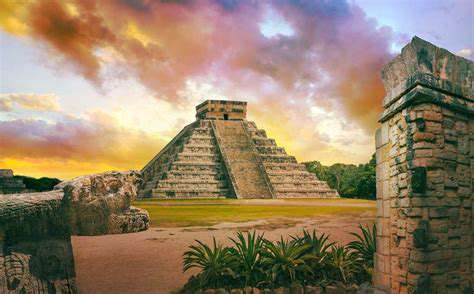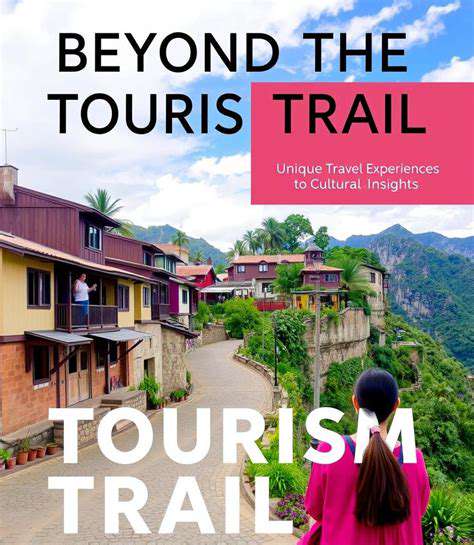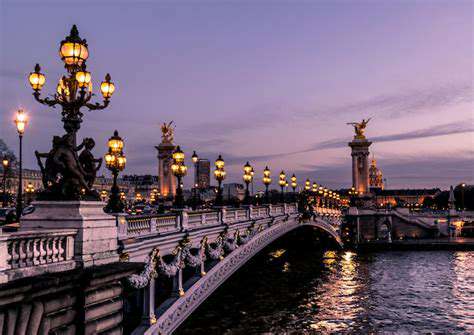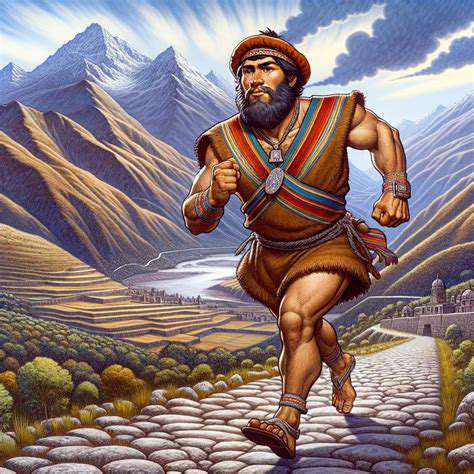A Guide to Visiting the Yucatan Peninsula [Beyond Cancun]
Stepping Into Mayan History
While many visitors flock to Yucatan's beaches, the peninsula holds deeper treasures in its ancient Mayan sites. Walking through Chichen Itza's sprawling complex, I felt the weight of history in every carved stone. The less crowded ruins at Tulum offer equally powerful moments, especially when standing atop the cliffs as waves crash below. These aren't just tourist attractions - they're living classrooms where the past feels vividly present. The intricate carvings tell stories that scholars are still deciphering today.
What struck me most was how advanced Mayan civilization was. Their astronomical knowledge allowed them to build structures aligned with celestial events with precision we'd struggle to match even today. Their societal structures and religious practices reveal a culture both sophisticated and deeply spiritual. Understanding these details transforms a simple visit into a profound cultural experience.
Cenotes: Nature's Swimming Pools
The first time I lowered myself into a cenote's cool waters, the tropical heat instantly melted away. These natural sinkholes, unique to the region, range from open pools to elaborate cave systems. The clearest ones reveal underwater rock formations and schools of fish that seem to float in air. Swimming here feels like discovering a secret world - one that the ancient Mayans considered sacred.
Beyond their beauty, cenotes showcase Yucatan's fascinating geology. The limestone bedrock creates these natural wells through centuries of water erosion. Some require adventurous climbs down rope ladders, while others offer easy access for all ages. The stillness inside a cave cenote creates moments of perfect tranquility amid travel's usual hustle.
Wildlife Adventures Off the Beaten Path
In Sian Ka'an Biosphere Reserve, our guide pointed out spider monkeys swinging through the canopy just feet above us. The reserve's network of lagoons and forests shelters countless species, from colorful toucans to stealthy jaguars. Morning birdwatching trips reveal nature's daily dramas - herons stalking fish, parrots squabbling over fruit, and if you're lucky, a rare sighting of a jabiru stork.
These ecosystems demonstrate nature's delicate balance. Watching how mangrove roots filter water or how certain plants attract specific pollinators makes you appreciate conservation efforts. Many local guides grew up in the area and share personal stories that bring the landscape to life in ways no textbook could.
A Feast for the Senses
Yucatecan cuisine surprises first-time visitors with its complex flavors. The achiote-marinated pork in cochinita pibil, traditionally cooked underground, falls apart at the touch of a fork. Local markets overflow with ingredients you won't find elsewhere - sour oranges, habaneros with fruity heat, and recado spice pastes in vibrant colors. Every meal here tells a story of cultural fusion, from Mayan cooking techniques to Spanish introductions like pork and citrus.
What makes dining special is the communal atmosphere. Small family-run restaurants often explain dishes' histories while serving them. Trying panuchos (stuffed tortillas) at a streetside stand or fresh ceviche at a beach palapa makes you part of daily local life rather than just an observer.
Seaside Serenity
After days of exploration, Yucatan's beaches provide perfect respite. Unlike crowded resort areas, quieter stretches like Playa Norte on Isla Mujeres offer powder-soft sand and water in impossible shades of blue. Late afternoons bring magical light as fishermen haul in their catch and families gather to watch the sunset.
The rhythm of coastal life here soothes the soul. Early mornings might find you sharing the shore with locals practicing yoga or artists sketching the view. Beachfront palapas serve fresh coconut water straight from the shell - the ultimate refreshment after a swim in the warm Caribbean.
Cultural Connections
Venturing into smaller towns reveals Yucatan's true heart. In Valladolid, I watched artisans hand-embroidering traditional huipil blouses using techniques passed down generations. A chance conversation with a shop owner led to an invitation to a local birthday celebration, complete with homemade tamales and lively jarana music. These unplanned moments create the most lasting memories.
What stays with you isn't just what you see, but how you're welcomed. Whether learning to make chocolate from cacao beans or helping grind corn for tortillas, participating in daily traditions builds genuine connections. The Maya phrase In lak'ech (I am another you) captures the region's spirit of shared humanity.
Decoding Chichen Itza's Mysteries

Walking Through History
Approaching Chichen Itza's monumental structures, I understood why this site captivates millions. The Pyramid of Kukulkan isn't just visually stunning - its design reflects advanced astronomical knowledge. During equinoxes, shadows create the illusion of a serpent slithering down the steps. This blend of art, science, and spirituality exemplifies Mayan brilliance.
More Than Just a Pyramid
While El Castillo dominates views, the site's other structures intrigue equally. The massive ball court's acoustics let whispers travel clearly across its length, suggesting ceremonial importance. The Temple of the Warriors' columns feature intricate carvings that scholars still interpret. Every corner holds new details revealing Mayan cosmology and daily life.
The Sacred Well's Secrets
Walking to the Cenote Sagrado, I imagined the rituals once held here. Archaeologists have recovered gold, jade, and even human remains from its depths, evidence of offerings to the rain god Chaac. The cenote's still waters reflect the sky, creating a natural mirror that must have seemed magical to ancient worshippers.
Preserving the Past
Seeing conservation teams at work highlighted the challenges of protecting such sites. Humidity, vegetation growth, and visitor impact constantly threaten these ancient structures. Responsible tourism matters - staying on marked paths and avoiding touching carvings helps ensure future generations can experience Chichen Itza's wonder.
Riviera Maya's Natural Wonders
Underwater Paradises
The Mesomerican Reef system along Riviera Maya's coast teems with life. Snorkeling near Akumal, I swam alongside sea turtles grazing on sea grass. In deeper areas, colorful coral formations shelter tropical fish in neon hues. Protected marine parks ensure these ecosystems thrive despite growing tourism.
Cenotes: Windows to the Underworld
Dos Ojos cenote's crystal-clear waters revealed stunning stalactites when I dove beneath the surface. Guides explained how these freshwater pools connect through vast underground rivers - the same systems that provided water for ancient Mayan cities. Floating in the cool water, surrounded by rock formations millions of years old, felt like traveling through time.
Jungle Adventures
A dawn hike through Sian Ka'an brought encounters with howler monkeys and countless bird species. Our guide pointed out medicinal plants and explained the reserve's conservation programs. The symphony of jungle sounds - from croaking frogs to chattering parrots - created an immersive natural experience far from resort crowds.
Living Yucatan Culture

Market Days
At Mérida's Lucas de Gálvez market, vendors proudly explained uses for unfamiliar fruits like mamey and sapote. The scent of fresh tortillas mixed with spices in the air as shoppers bargained for everything from hammocks to handmade pottery. This vibrant commerce hub showcases Yucatan's living traditions.
Flavors of Tradition
Participating in a cooking class revealed the complexity behind seemingly simple dishes. We ground spices by hand for recado paste and learned the proper way to wrap tamales in banana leaves. The resulting meal - rich with flavors from local ingredients - tasted infinitely better than any restaurant version.
Musical Heritage
An evening of trova music in a Mérida plaza demonstrated how Spanish and Mayan influences blend. The romantic guitar melodies carried stories of the region's history, while the audience's enthusiastic participation showed how deeply this art form remains woven into daily life.
Quality gear enhances outdoor experiences. Investing in proper equipment pays off in comfort and safety, especially when exploring Yucatan's diverse landscapes from jungles to cenotes.






![Exploring the Temples of Southeast Asia [Cultural Guide]](/static/images/27/2025-05/Myanmar27sGoldenPagodas3AASymphonyofSpirituality.jpg)


![Best Diving Spots in the Caribbean [Underwater Guide]](/static/images/27/2025-05/TipsforPlanningYourCaribbeanDivingAdventure.jpg)
![Best Trails for Mountain Biking [Destinations]](/static/images/27/2025-05/BritishColumbia27sCoastalTrails3AAPacificNorthwestEscape.jpg)
